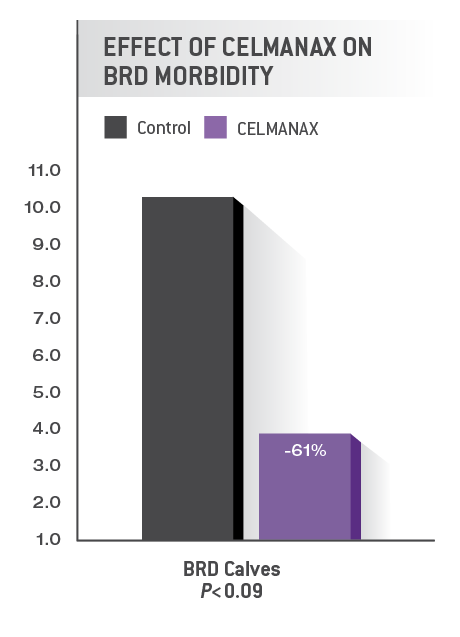
Say goodbye to the effects of cattle transport stress with RFCs.
Road trips are fun. They take us to new destinations to see exciting things. While we often find adventure and thrill in road trips, travel for cattle can be stressful.
Cattle transport presents a plethora of potential stressors, which can lead to weakened immune systems and sickness. From tough weather conditions to lengthy travel to commingled loads, many factors can have detrimental effects on cattle. Helping animals become resilient against these stresses by bolstering their immunity can significantly decrease incidence of sickness and mortality during the receiving period.
Taking proactive measures to prepare cattle for the stressors of the receiving period may help maintain feed intake, boost average daily gain (ADG) and reduce costs from clinical health events. And it all starts in the gut.
Gut: The first line of defense.
The gastrointestinal (GI) tract is the primary point of attack for pathogens, diseases and infections. Pathogens latch on to cattle with compromised immune systems much easier compared to cattle with resilient guts. In fact, 70 percent of a ruminant's immune system is associated with the gut, proving that a healthy animal is synonymous with a healthy gut. When the GI tract is healthy, cattle are more resilient to stressors like transport.
Bovine respiratory disease (BRD), also known as shipping fever, is the most prevalent disease in stocker and feedlot cattle and can account for up to 80 percent of feedlot morbidity1. So how do you keep cattle healthy? When you improve immunity, you’ll not only boost cattle health, but you’ll also improve profit margins.
Feeding for success.
With increasing pressure to decrease antibiotic use, producers are turning to alternative ways of maintaining animal health. Nutrition is central to helping prevent sickness like BRD and achieve production goals. CELMANAX™ works proactively in the gut to maintain the natural microbial population and support beneficial bacteria. When beneficial bacteria are supported, animals are healthier and the need for antibiotics can be reduced.
CELMANAX delivers Refined Functional Carbohydrates™ (RFCs™) to help cattle cope with environmental changes. RFCs block receptor sites in the gut and prevent pathogens from attaching to the intestinal lining. They also support fermentation and rumination to reduce the effects of toxins, like mycotoxins, in feed.
By maintaining and supporting nutrient uptake, CELMANAX ultimately leads to better feed efficiency and animal performance.
Study shows RFCs are transport approved.
One research trial2 examined two truckloads of heifers fed receiving diets. One group received a control diet and the other received a control diet with CELMANAX. The group fed CELMANAX recorded higher ADG, with a 61 percent decrease in BRD cases.


Setting cattle up for success.
Don’t let stress wreak havoc on your herd. Set up your cattle for success in the receiving period by adding CELMANAX to rations to improve gut health and strengthen immunity. By doing so, cattle will be more resilient to the diseases and infections associated with transport stress.
To learn more about how CELMANAX can support receiving period health in cattle, find an ARM & HAMMER rep near you.
READY TO LEARN MORE?Want to learn more about what our #ScienceHearted team can do for your operation? Fill out the form below and one of our experts will be in touch shortly. |
About Dr. Joel Pankowski |
|
Dr. Pankowski has a diverse background with animal nutrition companies including his current role as Senior Technical Services Manager at Arm & Hammer Animal and Food Production where he has been since May of 2011. Dr. Pankowski earned his bachelor’s and master’s degrees in animal science and dairy management from The Ohio State University and a Ph.D. in reproduction and epidemiology from Cornell University. |
1 BRD. Back to basics. Drovers September 22, 2014. Available at: https://www.drovers.com/article/brd-back-basics-0
2 Ponce CH, Schutz JS, Elrod CC, Anele UY, Galyean ML. Effects of Dietary Supplementation of a Yeast Product on Performance and Morbidity of Newly Received Beef Heifers. Prof Anim Sci 2013;28:618-622.





